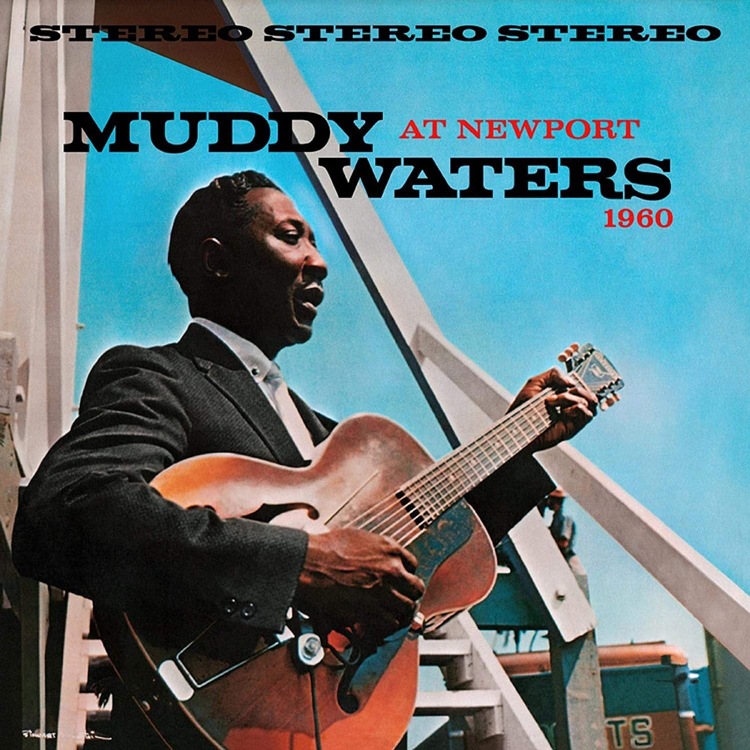AFTER perhaps years of only regional or even just local fame, global recognition arrived late for America’s blues pioneers during the middle of the last century, thanks mainly to the British beat groups, which had covered so much of their material.
Most blues fans will probably have heard the story about Muddy Waters who, while working as a janitor at Chess Records in Chicago, bumped into the Rolling Stones while they were on a recording date at the company’s 2120 South Michigan Avenue studios.
The story goes that the Stones were aghast at the fact that their hero was not recognized in his homeland, especially so bearing in mind McKinley Morganfield’s music had been such a major influence on the fledgling band when they were just a bunch of virtual unknowns scuffling gigs on the London pub circuit.
Full credit should therefore go to the world’s greatest rock band for making his name better known, because there is little doubt that the Stones’ championing of men such as Waters, Howling Wolf, Jimmy Reed and Slim Harpo undoubtedly resulted in these artists’ long overdue recognition.
By the early 1960s, blues was gaining an ever-growing number of followers, and especially so in my hometown of Rugby in the English Midlands.
While the nearby River Avon’s water meadows were hardly the Mississippi Delta, there is little doubt in my mind that there was a direct correlation between the great motor cities of Detroit and Coventry and the latter’s subsequent emergence as a hotbed of musical innovation.
And then there was Birmingham, where the music was later destined to morph into what would soon be known as ‘heavy metal’ in Brum’s legendary Henry’s Blues House and also at Mothers, formerly the Carlton Ballroom in Erdington.
By the mid-1960s, blues was the dominant driving force, and this fact was not lost on promoters keen to get their artists gigs. The first blues singer I ever saw was Champion Jack Dupree, a barrelhouse player who had relocated from his native New Orleans to Yorkshire.
Watching Champion Jack in action in the top room of a Rugby pub proved to be a real eye-opener, his performance a portal to another world that seemed incredibly exotic and alluring.
And not a little filthy, too… for his act was exceedingly bawdy, quite a shock for a reasonably innocent 16-year-old who had only just stopped watching Dixon of Dock Green and The Lone Ranger on the telly.
John Lee Hooker visited Rugby in March 1966. By that time, I had become a rookie reporter on the Rugby Advertiser, and – making the most of my newly found status – jumped at the opportunity of interviewing him at the town’s premier concert venue, The Benn Memorial Hall.
But more was to come. In the late summer of 1969, Rugby hosted a three-day, rock, blues and folk festival that would feature some of the top acts of the day.
These included Rory Gallagher’s Taste, Free, The Groundhogs, John Dummer Blues Band, The Dave Kelly Blues Band, Alexis Korner, and top acoustic slide player Mike Cooper.
Enjoying some prominence because of my job on the local paper, I was asked to write the publicity for this groundbreaking festival. Yes indeed. These were truly exciting times to be young and into music.
However, the blues would perhaps gain its greatest prominence in this part of the Midlands during the early 1970s, when the Lanchester Polytechnic – now Coventry University – staged an arts festival that would provide an early indication of the city’s growing status in the music world.
I have little doubt that these developments would ultimately lead to the emergence of Two-Tone. One of its leading flag bearers was Jerry Dammers, who, before his songwriting took off, had been making a name for himself across Coventry as a fine boogie piano player.
In fact, he played in my band, Tame Ape, whenever we gigged in the city, providing a convincing Johnny Johnson-style accompaniment to my Chuck Berry guitar riffing.

The Lanchester played a major role in staging some memorable nights that showcased the talents of musicians whose names are today revered as being among the finest exponents of the blues.
In particular, I remember seeing ‘swamp blues’ exponent Lightnin’ Slim, who appeared on the same bill as Homesick James, Washboard Willie, and Boogie Woogie Red.
Stylistically very similar to fellow ‘swamper’ Slim Harpo, Slim served up a musical menu steamier than a Louisiana bayou, while Red delivered a honking set of barrelhouse, frequently seasoned with flurries of lurching New Orleans-style piano figures.
When it came to the turn of Homesick James, Elmore’s supposed cousin hit the spot immediately with the evergreen Dust My Broom and followed this up with Robert Johnson’s Stones in My Passway and a host of other numbers that bore witness to his skill with the electric slide guitar.
When the acts joined together for the finale, I seem to recall that Washboard Willie soon became irritated by Lightnin’ Slim, the former making comments that the latter wisely ignored. Other bluesmen to appear at the Lanchester concerts were Snooky Pryor, J B Hutto, and Doctor Ross.
Nevertheless, Coventry’s greatest coup must undoubtedly have been Chuck Berry’s legendary gig at the city’s Locarno dance hall on February 3, 1972.
For it was here that the late great rock ‘n’ roller recorded My Ding-a-Ling, aided by hundreds of concertgoers, including yours truly, joining in on the chorus.
And yes, to be sure, this certainly wasn’t blues by any stretch of the imagination. But it’s not everyday that you are invited to become a backing musician on what would turn out to be Chuck Berry’s only number one single, is it?



Great piece John!